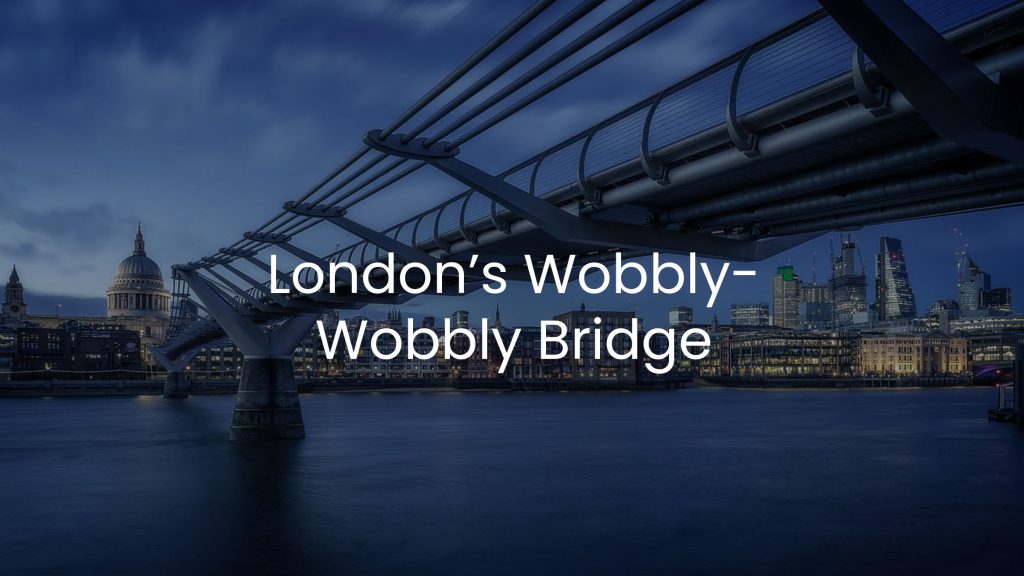|
Getting your Trinity Audio player ready...
|
I will give thanks to You, for I am fearfully and wonderfully made. Wonderful are Your works and my soul knows it very well (Psalm 139:14, NASB).

With a new footbridge needed in downtown London for pedestrians to cross the River Thames, a world-famous architect was hired for the design. Called the London Millennium Footbridge, its construction began in 1998 and was finished in 2,000.
On the opening day of June 10, 2000, thousands stood in line to walk across the bridge.
After the perfunctory opening ceremony with big-wig speeches and ribbon-cutting, the crowds began walking onto the bridge from both sides. The bridge started to wobble, increasing in severity until the people crossing it had difficulty standing upright.
The city leaders closed the bridge. Oops!
Two years later, it was reopened after a redesign that added additional supporting struts and beams. A bridge with the official title of the London Millennium Footbridge is now known (unofficially, of course) as the Wobbly-Wobbly Bridge.
When I was there recently and listening to a tour guide tell this story, someone asked what happened to the architect, to which the guide responded, “He now lives in Switzerland, having left after saying the British people were too picky.” (The Brit guide used more “salty” language than the sensors of Interruptions allow.)
HHHHMMMHHM. Obviously, the original design of the bridge was faulty, since a bridge made for walking should be able to be walked on. The bridge, designed with low railings, allowed for great views, but had insufficient suspension support to keep it from swaying back and forth. The wobbly bridge wobbled from people walking on it beyond the imagination of the architect and all the other engineers working on it.
The bridge swayed just enough to cause the steps of those walking on the bridge to synchronize their stepping, which caused an exponential effect of more force (think thousands swaying back and forth together) until the bridge became unwalkable and perhaps dangerous.
The architect expected sway but thought that the random steps of the people would cancel out the possibility of unified swaying. That didn’t happen, as people innately adjusted their stepping into a similar cadence as they crossed the bridge. Later, it was discovered that though the bridge had a “designed-in back-and-forth wobble factor,” this wobble or rhythm had the exact timing as a typical person taking a step.
So, thousands of people walking across the bridge, stepping in time with one another, along with the bridge inadvertently designed to wobble in time with the thousands of steps, created the wobbly-wobbly effect and an unsafe bridge.
When I was in London, I walked across the bridge! I stopped in the middle and rocked back and forth trying to cause a wobbly-wobbly catastrophe, but it didn’t work. The redesign now correctly cancels the wobbly effect, and the bridge, though still swaying as all suspension bridges do, is now walkable.
In Interruptions, I often write about how things are designed. Aren’t we glad that our earth and the universe, made up of billions of spinning stars and planets, were created by a God who understands the basic principles of “wobbly-wobbly”?
Amen!

